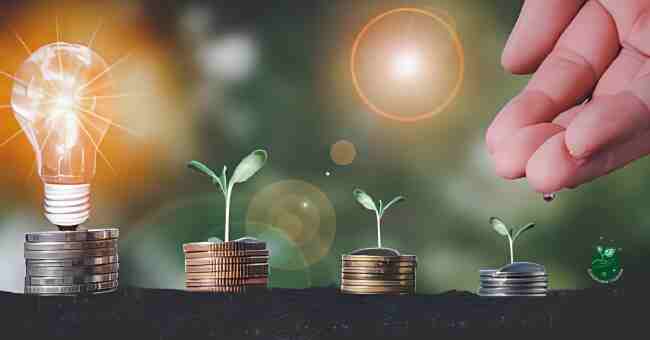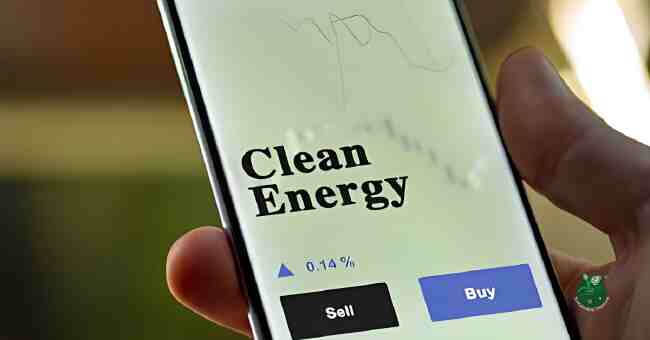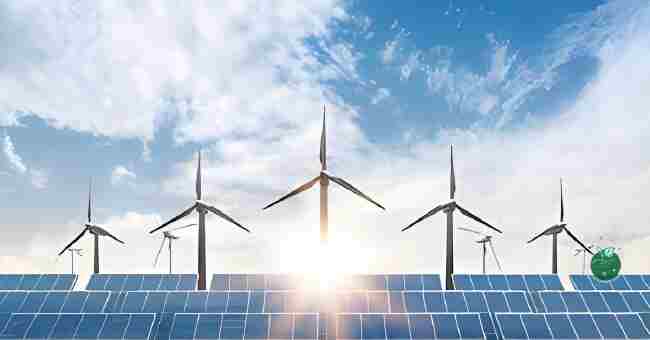Are you wondering what exactly are green building investments? Yes, Green building investments refer to allocating financial capital – whether via purchases, loans or other instruments – into sustainable real estate assets.
This includes funding construction of new high performance buildings as well as renovations to enhance energy efficiency, renewables integration and resource conservation in existing properties.
My personal interest in green building investment stems from a lifelong affinity for architecture and passion for environmental protection.
As a kid I admired green roofed buildings and solar panel covered homes. Later while studying finance and engineering in college, I researched just how significantly sustainable construction enhances financial returns through energy savings and future-proofed assets.
This article will explain key opportunities, returns profiles and risks to demystify the growing green building investment marketplace for both institutional investors and small-scale financiers eager to align portfolios with climate goals.
Multiple Benefits Attracting Investors to Green Buildings
Constructing new buildings or retrofitting existing properties to be more sustainable is proving to make business sense today. Beyond doing good for the planet, green buildings cut costs and future-proof assets. Let’s review some of the key advantages:
Energy and Cost Savings
Buildings account for about 40% of global energy usage and one third of greenhouse gas emissions. By deploying energy efficiency and renewable energy measures, green buildings can achieve:
- 50-70% reductions in energy use
- 40-50% cuts in water consumption
- Over 50% decreases in solid waste generation
As utility rates rise, these savings add up. Owners may enjoy a 20 percent or greater decrease in operating costs compared to conventional buildings.
Health and Productivity Gains
Green design attributes like abundant daylight, proper ventilation and use of low emission materials translate into measurable health perks:
- 6-26% reduction in respiratory disease
- 7.5% average increase in occupant cognitive scores
Healthier, more comfortable environments lead to higher employee productivity and satisfaction. This can boost tenant retention for property owners.
Future-Proofing Assets
With global initiatives like the Paris Climate Agreement, policies aimed at slashing carbon emissions are expanding. Constructing sustainable buildings helps mitigate regulatory and reputational risks down the road.
Green certifications like LEED provide third-party validation of environmental performance. This enhances an asset’s marketability to tenants and buyers with sustainability mandates.
Types of Green Building Investments

Image from Istock
While definitions vary, green buildings broadly refer to properties designed, constructed and operated to minimize environmental harm. Investors can target different types of sustainable real estate assets:
New Construction Projects
Funding ground-up development of high performance buildings with features like:
- Energy efficient HVAC and lighting systems
- Water conservation fixtures
- Solar panels
- Advanced metering infrastructure
- Green materials selection
- Charging stations for electric vehicles
- Onsite renewables like wind turbines
Retrofitting Existing Buildings
Updating older properties to modern sustainability standards, including:
- Insulation, air sealing and Energy efficient windows
- Heating, ventilation and cooling equipment upgrades
- Water conservation measures
- Renewable energy systems
- Building automation systems
- Xeriscape landscaping with native plants
| Strategy | Cost & Time Considerations |
|---|---|
| Deep Energy Retrofit | Major overhaul to achieve over 50% in energy savings; lengthy project |
| Recommissioning | Focuses on optimizing existing systems; moderate cost & duration |
| Monitoring-based Commissioning | Ongoing fine-tuning of systems based on building analytics; low cost |
Smart Building Technology
Deploying cutting-edge systems for optimizing building performance, like:
- IoT sensors and meters
- Fault detection and diagnostics
- Energy management dashboards
- Automated lighting and climate controls
- Energy storage solutions
- Smart glass facade materials
While smart systems require higher upfront investment, the deep energy savings and space utilization benefits can yield an attractive 10-20 percent ROI.
Returns Outperforming Conventional Assets
Let’s examine why more investors are allocating funds into green buildings compared to alternatives like bonds or stocks.
Higher Occupancy and Rental Rates
Recent studies reveal green certified office buildings achieve over 5 percent higher occupancy on average compared to peer non-certified asset. Rental rates are also higher per square foot – notably almost 10 percent higher for ENERGY STAR certified buildings.
Increased Asset Value and Sales Prices
A recent survey found that executives would pay an average of 7 percent more for environmentally certified buildings. Easy to understand why when you consider the lower operating costs and future-proofing benefits.
Investment managers interviewed for the survey estimated green upgrades enhanced asset values by an average of 11 percent. More strikingly, 79 percent said they achieved higher-than-expected sales prices for green buildings.
Lower Operational Costs and Risks
While integrating sustainability solutions may require greater upfront capital, owners benefit from years of drastically reduced energy, water and waste bills afterwards. Proper commissioning along with continuous monitoring enables fine-tuning to optimize savings potential.
With LEED and Energy Star certified buildings shown to suffer 40 to 50 percent less downtime during disruptions, green measures actually enhance resiliency while cutting costs.
Government Incentives
Governments around the world offer lucrative incentives for energy and water efficiency projects, as well as renewable energy generation. Tax breaks, rebates, grants and preferential financing provide a nice boost to ROI.
Examples include property assessed clean energy loans, tax credits equal to 30 percent of solar project costs, and accelerated depreciation on energy efficiency equipment.
Vehicles to Access the Green Building Investment Market
While direct acquisition of sustainable properties remains an option, institutional and small-scale investors alike enjoy more options today to gain exposure to the green building marketplace.
Green Bonds and Property Funds
Green bonds emerged to fund climate-aligned projects like energy efficiency and renewable energy asset deployment. The instruments come in various forms including general obligation as well as revenue and project bonds.
Similarly, real estate funds specifically targeting sustainability measures have proliferated. For investors who lack specialized expertise, these instruments provide a passive avenue to tap into green building opportunities.
| Type of Fund | Example Investments |
|---|---|
| Private equity funds | Ground-up development projects or acquisitions |
| Debt funds | Provide senior and subordinate loans for renovations |
| REITs | Construct or own green-certified properties |
A major bonus is third-party oversight ensuring investment proceeds indeed flow towards ecological projects – not just marketing hype. This provides impact transparency.
Crowdfunding Platforms
Real estate crowdfunding pools money from multiple backers into targeted property technology upgrades. In return for providing a project loan, investors receive principal plus interest payments over time.
By widening the investor base, crowdfunding allows small-scale backers to participate. Automation also cuts due diligence costs. Thus projects may feature slightly lower returns, but a more accessible entry point around 5 percent.
Public-Private Partnerships
Governments courts partnerships with private entities to develop public sustainable infrastructure like low carbon schools and hospitals or affordable green housing projects. While complex, PPPs allow investors to fund community growth while earning reasonable returns.
Green REITs
Real estate investment trusts offer a liquid, low-barrier way to invest in sizable property portfolios. Green REITs zero in on assets like LEED or Energy Star certified buildings. With major funds like Blackstone and Brookfield launching green REITs, expect more growth ahead.
Factors Supporting Strong Continued Growth
From regulatory pressures to tech improvements, multiple factors will continue propelling green real estate investing forward for years ahead:
Climate Change Mitigation Policies
As warnings escalate from the scientific community, governments are responding through expanded emissions-limiting policies. Buildings sit directly in regulators’ crosshairs. Recent legislation in Europe makes certain minimum energy standards compulsory for renovations. Stricter building codes also raise the floor for new construction.
Companies anticipate expanded compliance requirements. Constructing and operating efficient, future-proof buildings serves as a logical step to get ahead of future laws while bolstering sustainability credentials.
Corporate Sustainability Commitments
Increasingly companies across industries set public carbon neutrality and energy reduction goals. Green offices assist in delivering on these ambitions – especially as remote work normalizes and onsite headcounts stay reduced.
Green buildings also help companies compete for young talent increasingly prioritizing environmental impact when job hunting. In a recent survey over 65 percent of millennials said they researched employers’ sustainability performance and desired a role that makes a social difference.
Technology Innovations
From smart glass and building-integrated solar photovoltaics to advanced green cement and phase change materials, materials science constantly yields solutions to drive building performance while lowering carbon footprints. 3D printing even enables on demand construction with less waste.
Complementing physical upgrades, sophisticated AI-enhanced software fine-tunes HVAC, lighting and other systems to trim energy demands. Room and desk sensors facilitate better space utilization rates as well.
And with renewable power generation and battery storage costs falling yearly, buildings can potentially generate ample clean energy onsite for self-consumption.
Rising Energy Costs
As subsidies phase out and distribution losses grow from an aging grid infrastructure, retail electricity prices steadily tick higher across states and countries.
The U.S. EIA forecasts average household energy expenditures to swell by 28% between 2021 and 2035. Saving money through energy efficiency amidst rising utility rates will remain priority one for property owners and occupiers alike.
Investor Interest Not Slowing Down
In 2021 a survey found 45 percent of institutional investors and fund managers already held allocations dedicated to green buildings, while another 46 percent planned to over the next two years.
Motivations stemmed from expected risk-adjusted returns but also concerns around devaluation risk for inefficient buildings failing to meet tightening environmental standards in the future.
FAQs

Green Building Investment
Why Invest In Green Buildings?
Beyond helping the environment, green buildings make dollars and sense for investors today. Just some of the benefits your bottom line sees:
- Lower Operating Costs: Energy and water savings alone typically deliver 20%+ reductions in utility bills. With retrofits, savings often surpass 50% as outdated, inefficient systems get swapped for smart, high efficiency equipment.
- Higher Rents & Sale Prices: Tenants and buyers value amenities like great daylighting, healthy indoor air quality, EV charging, and resilience measures likes battery backup power. Green building certifications also boost asset marketability.
- Future-Proofed Assets: With carbon emissions regulations expanding yearly, inefficient buildings face growing compliance costs and devaluation risks. Constructing or renovating properties to operate emissions-free helps avoid future retrofit headaches.
How Much Does Building Green Cost?
Constructing a new high-performance building compliant with leading sustainability standards costs roughly 0-15% more upfront on average. However operating savings often outweigh added first costs within just a few years.
For existing buildings, green retrofit projects typically require anywhere from 5-25% additional capital expenditure depending on the upgrades selected. The key is choosing measures with solid ROIs like lighting, HVAC, automation systems or onsite solar.
Using alternative funding sources like incentives, crowdfunding or green bonds can further defray first outlays. View extra spending more as investing in better cash flowing assets.
What Are 3 Benefits Of Green Buildings?
- Employee Health & Productivity: Green design attributes directly enhance cognitive function, limit illnesses, and boost workplace satisfaction – translating into bottom line gains.
- Risk Mitigation: With strengthened grids, battery backups, passive survivability tactics and flood resilience measures, green buildings suffer far less disruption from storms and power outages.
- Enhanced Wellness: Design that harmonizes with nature fosters improved physical health and emotional wellbeing for occupants – contributing to a happier life beyond just work.
What Is The Need For Green Investment?
Constructing sustainable infrastructure aligned with global climate targets requires mobilizing massive capital flows towards green industries. Governments alone can’t finance the transition.
Already asset managers oversee trillions in funds thirsty for consistent returns. Channeling more investment towards climate-proof real estate, clean power projects and resilient infrastructure aids decarbonization while serving client interests.
What Is The Aim Of Green Building?
The overarching aim of green building practices involves dramatically limiting ecological harm associated with real estate – both during construction and across ongoing operations.
This means minimizing energy, water and materials consumption through smart design and advanced technologies while also eliminating pollution and nurturing nature.
What Is The Main Purpose Of Green Building Concept?
The foremost purpose behind green buildings involves protecting environmental and human health. Structures designed in harmony with nature instead of dominating it foster community wellbeing.
Tangible goals include enhancing energy, air and water quality by maximizing efficiency and renewable sources onsite. Wiser material selection eliminates toxins. Positive impacts also flow to the site’s immediate ecosystem.
How Long Does It Take To Build A Green Building?
For new high performance construction, the upfront design and planning phase generally lasts at least a few months longer than conventional buildings since extensive energy modeling and sustainability considerations come into play.
However, once shovels hit the dirt, average actual build times end up similar – generally 8-36 months for completion depending on building size and complexity. Modular green construction does enable speedier assembly.
Retrofitting existing buildings can take anywhere from a few months to a few years depending on scope. Building usage, access considerations, incentive timelines and customization influence project length too.
How Do You Apply For A Green Building?
No special application exists! Constructing a property or retrofitting an existing asset to qualifying green building standards earns certification. Independent organizations like LEED and Energy Star offer recognition programs to verify environmental performance.
Seeking green credentials does involve thoroughly documenting sustainability actions taken across areas like site selection, materials choices, energy and water systems and occupancy policies. Good record keeping aids verification.
How Do You Design A Green Building?
Successful green architecture requires adopting a whole building design perspective, meaning deeply integrating sustainability across all levels of planning from earliest stages. This includes:
- Tapping modeling tools to optimize orientations, massing and enclosure performances
- Prioritizing passive heating, cooling and lighting tactics before sizing mechanical systems
- Specifying non-toxic construction materials with high recycled content
- Designing adequate grid independence via onsite solar, geothermal, etc.
- Accommodating ample greenspace and wildlife habitats onsite
Following established standards like LEED provides helpful guardrails ensuring holistic environmental gains.
What Are The Risks Of Green Investing?
The risks of investing in green buildings closely mirror those associated with mainstream commercial real estate. Potential downsides chiefly include:
- Construction delays or cost overruns lowering expected returns
- Inadequate tenants signing long term leases after completion
- Inability to secure financing for recapitalization or exit
Additionally, inexperience assessing technical energy and sustainability aspects of buildings brings risk. Partnering with reputable developers or consultants helps mitigate blindspots.
Key Takeaways on Green Building Investment
With this overview of major aspects behind sustainable real estate investing, let’s recap core lessons:
- Green upgrades like efficiency measures and rooftop solar deliver attractive ROIs from energy savings
- Health and productivity gains also bolster bottom lines
- Future regulations and carbon pricing schemes enhance existing buildings risk
- Multiple paths exist to fund green projects while earning equitable returns
I encourage all investors to evaluate options to allocate at least a small portion of portfolios into local green building endeavors. Beyond doing good for the community and environment, the assets truly outperform.



